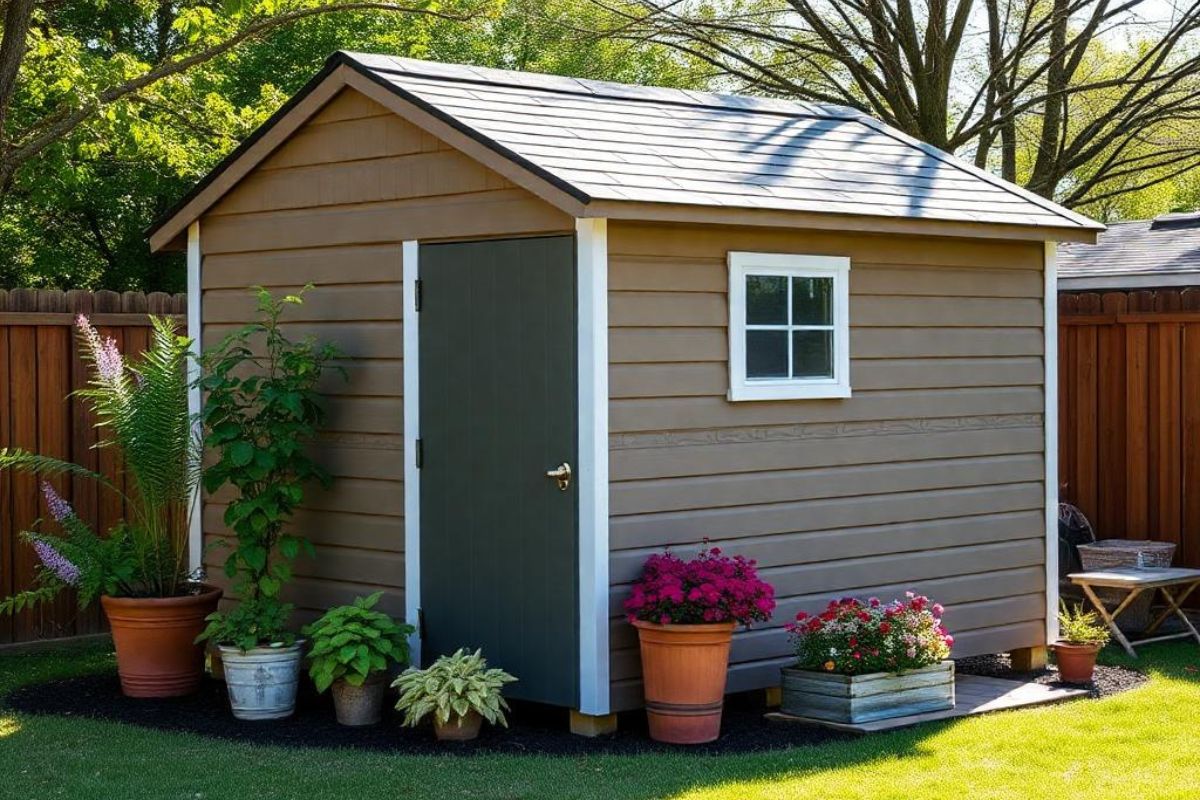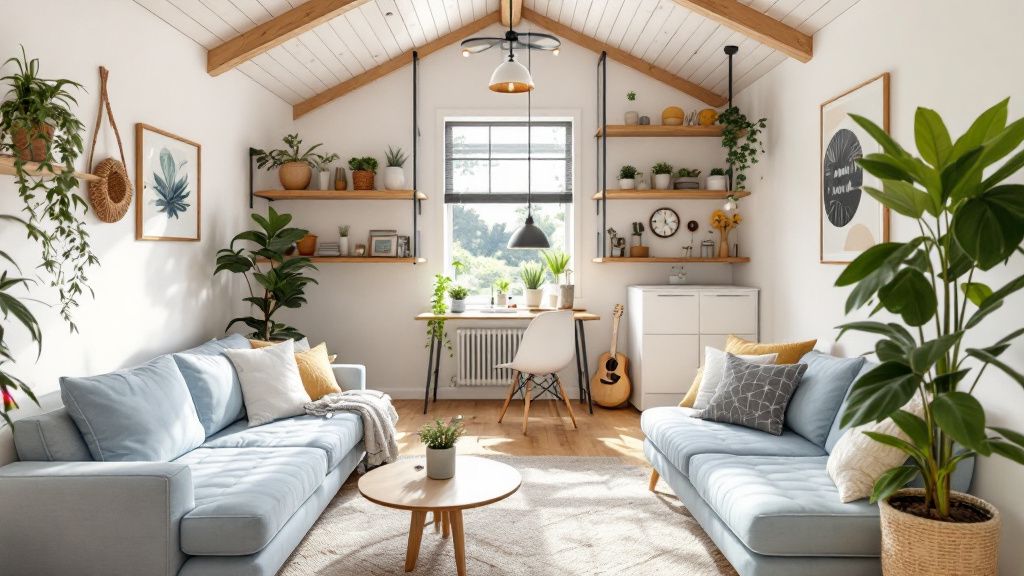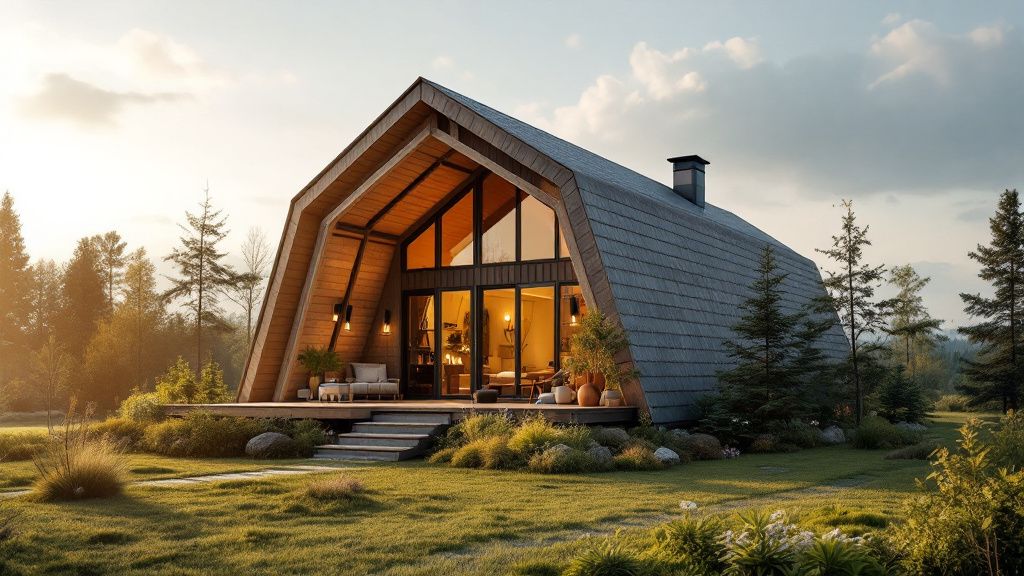Whatever the shed’s purpose, you want it to have all of the necessary components. This often means looking at some common features for small and large sheds. What features can you include in your modern shed’s design? The list is extensive and some of the options can be surprising and exciting.
Deciding on the Purpose of Your New Outdoor Shed
The shed’s purpose doesn’t necessarily mean you can’t take advantage of every available feature that’s out there.
.png)
However, the shed’s purpose can affect which features make sense. If you’re turning the structure into a garden/potting shed, shelving and counter space may be priority features. However, if you’re using the shed to store boxes of holiday décor, plenty of open space is probably at the top of your list.
Figuring out how you’re going to use the shed can make it easier to decide on the necessary features and which ones are simply a waste of your money to install.
Top Modern Shed Features to Consider
Some of the following features you can add after construction and others are best included in the shed’s design. Here’s a look at some features you may want to add to your shed.
Plenty of Space
You may not think of the size of the shed as a feature. However, your shed’s footprint is one of the first things to consider. The size affects everything from the overall cost to how you can use your new backyard shed.
The average shed ranges anywhere from 120 to 150 square feet. This is usually enough space to hold most yard and garden tools, including leaving space for a riding lawn mower. You may even have enough room to store a few boxes.
If your goal is to create a home office or possibly a yoga studio, you may want to go with a slightly larger shed. This will up the price but you’re also getting a shed that’s large enough to fit your needs. If you’re not sure what size shed is right for you, don’t hesitate to contact a professional.
Choose the Right Materials
Surprisingly, the materials don’t play a huge role in the type of extra features you can add. However, the building materials will impact cost, stability, and durability. Ideally, you want to go with materials that are rated for your area’s weather conditions. If you’re frequently dealing with strong storms, a metal shed may be more durable than one made from plastic (PVC) or wood.
Wood sheds are often priced a little lower than metal structures. However, wood is susceptible to rot, pests, and fire. PVC (plastic) is a little sturdier and you’re probably not going to need to worry about pests nibbling away on the plastic frame or siding. Like wood, plastic isn’t fire-resistant and may not hold up during strong wind storms.

Consider Adding Insulation
If your shed is simply being used for storage, insulation may not be a concern. After all, who cares if a few boxes get chilly in the winter? If you’re planning on using the shed as a home office or personal space, you probably don’t want to sweat in the summer and freeze in the winter.
Adding a layer of insulation can help the shed’s interior stay comfortable throughout the year. Don’t worry about upping your construction budget. Insulating a shed is relatively inexpensive. You can also keep costs down by using spray-in foam insulation.
Do You Need Lights?
You can easily incorporate a couple of windows into your shed’s design. Some shed kits even include windows, though the glass is usually an extra purchase. Did you know some sheds even come with skylights? If your heart is set on a skylight, your contractor shouldn’t have a problem including one in the roof design.
Windows and skylights are great during the day when the sun’s out. What if you want to use the shed at night or on a dreary, cloudy day? You can bring a flashlight or even hang a battery-powered lamp inside the shed.
However, this is only a temporary solution and you still may not have enough light. What about running electricity to the shed? Connecting a shed to the utilities usually isn’t difficult but it’s also not a DIY job.
Anytime a project involves electrical wiring, it’s always best to work with a professional electrician. While you’re thinking about electricity, what about running water? Usually, it’s best to connect both utilities around the same time.
Ventilation is a Must
Have you ever been in a space with poor ventilation? There’s almost always a permanent musty smell. When your shed is lacking ventilation, musty odors usually aren’t the only issue. Mold and mildew can build up, especially if you live in a humid climate. Adequate ventilation can also lower the interior temperature of the shed.
.png)
Most shed roofs are designed with at least a couple of air vents. Depending on your weather, you may need to add roof vents or consider having some installed at the top of the walls. Your building contractor can help you determine if additional vents are necessary and where they should be placed.
Don’t Forget About Shelving and Other Custom Features
You can easily add shelves to almost any modern shed regardless of the type. You can also have the shelves built in during construction or added later on down the road. Other customizable features can include a work table and/or bench. What about adding a cute front porch or maybe a railing to hold potted plants?
A hidden benefit of most outdoor sheds is how easy it can be to customize the design to fit your needs and reflect your tastes. If you’re ready to install a shed on your property, consult with an experienced contractor. They can help with everything from the shed’s design to ensuring you get your must-have features.






Share: